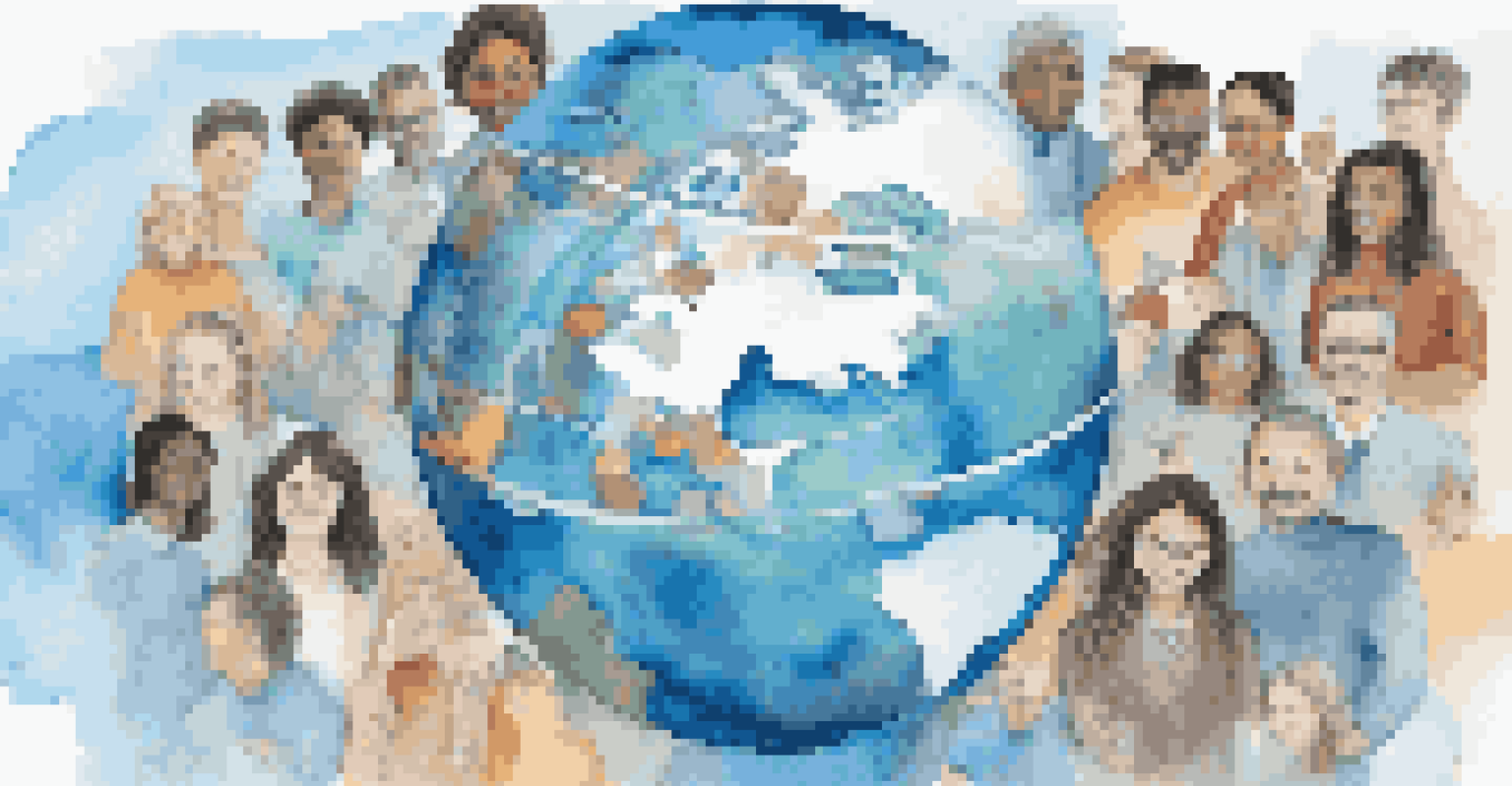Social Media's Role in Facilitating Teacher Collaboration Online

Understanding the Power of Social Media for Educators
Social media has transformed the way teachers connect and collaborate. Platforms like Twitter, Facebook, and LinkedIn have become invaluable tools for educators seeking to share resources and strategies. By engaging in these online communities, teachers can break out of their isolation and tap into a vast pool of knowledge and support.
The beautiful thing about learning is that no one can take it away from you.
Imagine a teacher in a small town who suddenly has access to a global network of peers. This connection not only enriches their teaching practice but also enhances student learning outcomes. Social media provides a digital space where educators can come together, share experiences, and learn from one another, no matter where they are located.
Moreover, social media allows for quick communication, making it easier to gather feedback or brainstorm solutions to common challenges. This immediacy fosters a sense of camaraderie and collaboration among teachers, creating a more supportive professional environment.
Building Online Communities for Teacher Support
Online communities have become a cornerstone for teacher collaboration. These platforms offer spaces where teachers can ask questions, share lesson plans, and discuss best practices without the constraints of time or geography. For instance, Facebook groups dedicated to specific subjects or grade levels can provide tailored support that resonates with educators' needs.

These communities also help in breaking down barriers that might exist in traditional professional development settings. Instead of feeling intimidated in a room full of experts, teachers can engage in discussions and contribute to conversations at their own pace. This encourages participation from all educators, including those who may feel less confident in their abilities.
Social Media Enhances Teacher Connection
Platforms like Twitter and Facebook provide educators with a global network for sharing resources and collaboration.
Furthermore, these online networks promote a culture of sharing and collaboration, allowing teachers to collaborate on projects or initiatives, enhancing their teaching practices. This sense of belonging can be invaluable, especially for new educators entering the field.
Harnessing Hashtags for Collaboration and Resource Sharing
Hashtags have revolutionized the way educators find and share information on social media. By using specific hashtags like #edchat or #teachersofinstagram, teachers can easily join conversations related to their interests or teaching challenges. This makes it incredibly simple to locate resources and connect with like-minded colleagues.
Collaboration allows us to know more than we are capable of knowing by ourselves.
For example, during a Twitter chat, educators from around the world can discuss a specific topic in real-time, sharing insights and strategies that they can implement in their classrooms. The ability to access diverse perspectives enriches the learning experience for all participants, allowing them to broaden their horizons.
Moreover, trending hashtags can highlight important educational movements or innovations, enabling teachers to stay updated on current trends. This fluid exchange of ideas fosters a collaborative spirit that is essential for professional growth.
Creating Collaborative Projects Through Social Media
Social media provides a platform for teachers to collaborate on projects that benefit their students. For instance, educators can connect across schools to create joint lesson plans or thematic units that engage students in new ways. This collaboration not only enriches the curriculum but also fosters a sense of unity among classrooms.
A great example is the global collaboration projects facilitated through platforms like Edmodo or Google Classroom. Teachers can involve their students in shared learning experiences, such as pen pal exchanges or joint science experiments, that transcend geographical boundaries. This not only enhances learning but also teaches students about global citizenship.
Online Communities Foster Collaboration
Virtual spaces allow teachers to engage at their own pace, breaking down barriers and encouraging participation.
These projects also encourage innovation, as teachers can creatively combine their strengths and resources. The result is a richer educational experience that can inspire both teachers and students alike.
Professional Development Opportunities via Social Media
Social media has opened up new avenues for professional development that were previously inaccessible. Educators can find webinars, online courses, and virtual conferences shared through various platforms. This flexibility allows teachers to pursue professional growth at their own pace and on their own schedule.
For example, a teacher might attend an online workshop hosted on Facebook Live or join a Twitter chat focused on classroom management strategies. These opportunities often come at little or no cost, making professional development more accessible than ever before.
Additionally, social media facilitates ongoing learning, as educators can continue conversations and discussions long after the initial event. This continuous connection helps to reinforce newly acquired skills and fosters a culture of lifelong learning.
Overcoming Challenges in Online Teacher Collaboration
While social media offers many benefits for teacher collaboration, it also presents some challenges. One common issue is information overload, as educators may find themselves inundated with content and resources. This can make it difficult to sift through the noise and focus on what is genuinely useful.
Another challenge is maintaining professionalism in online interactions. Teachers must navigate the fine line between personal expression and professional boundaries, ensuring that their online presence reflects their values and dedication to the profession. Clear guidelines can help educators engage meaningfully without crossing any lines.
Hashtags Simplify Resource Sharing
Using specific hashtags enables educators to quickly connect and access valuable information relevant to their teaching.
Additionally, not all educators may be comfortable using social media. Providing training and support can empower more teachers to embrace these tools and participate in online collaboration, ensuring that everyone can benefit from the advantages social media offers.
The Future of Teacher Collaboration in a Digital Age
Looking ahead, the role of social media in teacher collaboration is likely to grow even more significant. As technology continues to evolve, educators will find new and innovative ways to connect and collaborate. Virtual reality, for instance, may soon allow teachers to engage in immersive professional development experiences.
Furthermore, as more educators recognize the value of online collaboration, we can expect to see an increase in hybrid models of professional development that blend traditional methods with online engagement. This approach could lead to richer learning experiences that cater to diverse learning styles and preferences.

Ultimately, the future of teacher collaboration lies in leveraging technology to foster deeper connections and shared learning. By continuing to embrace social media, educators can create a vibrant community that supports both their professional growth and their students' success.